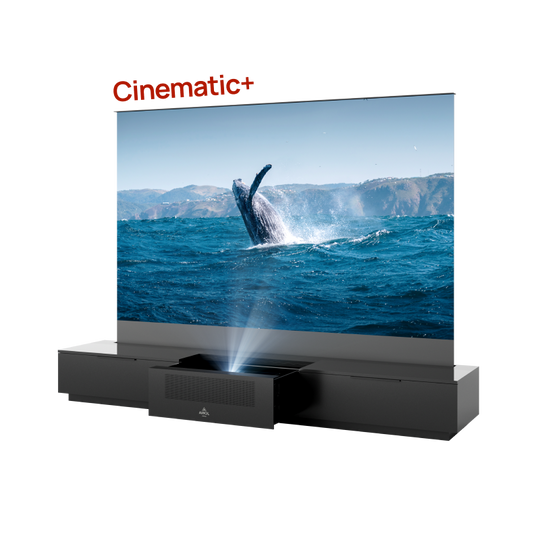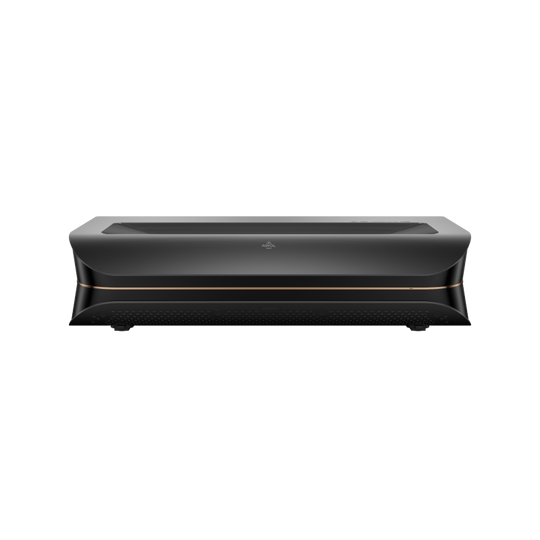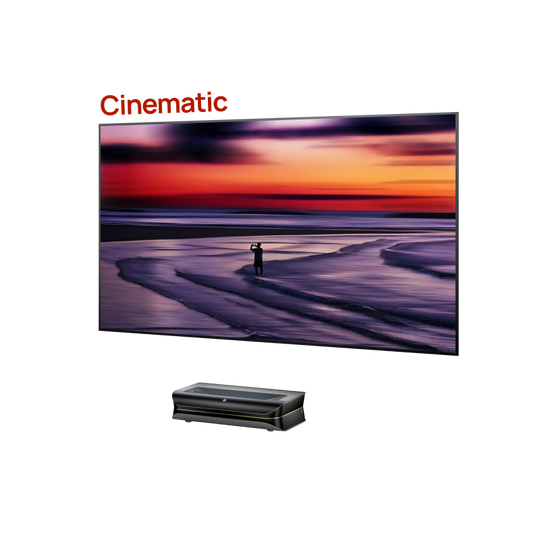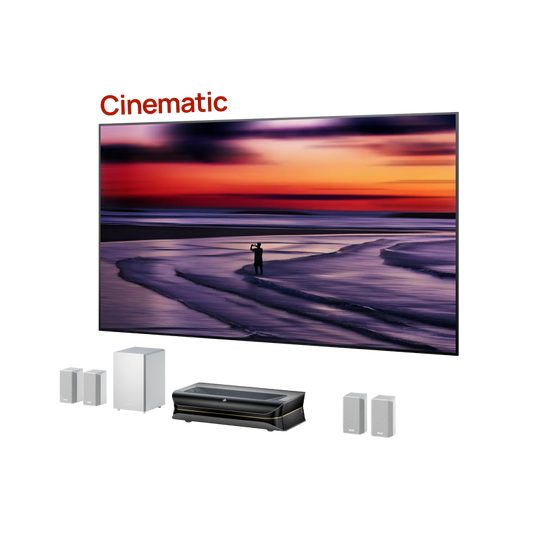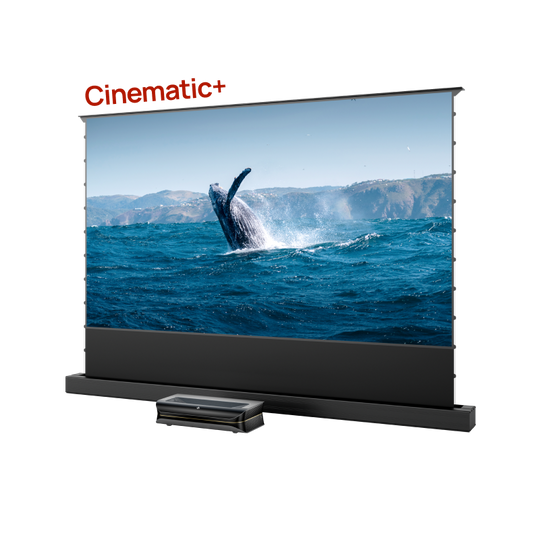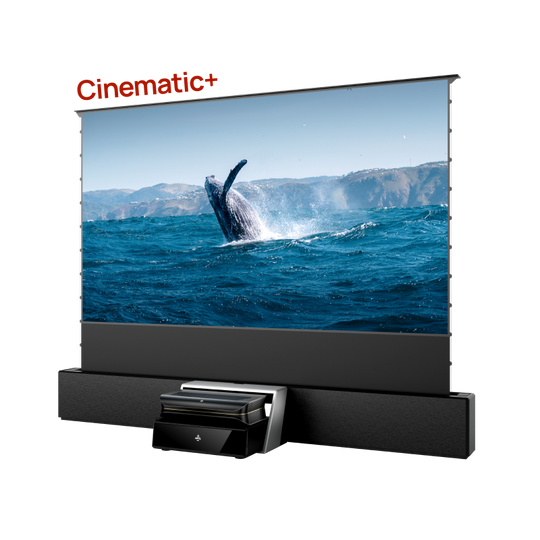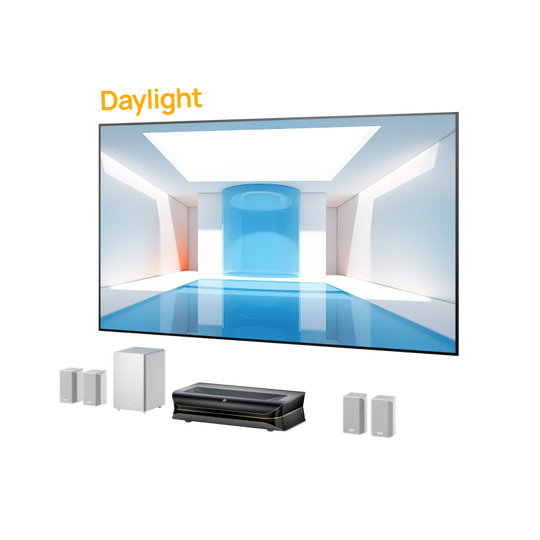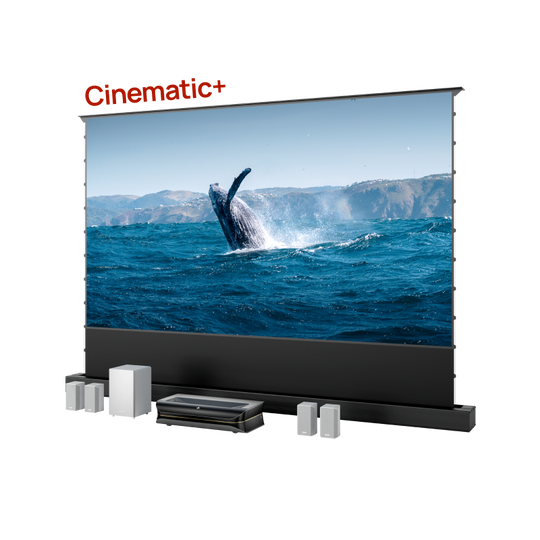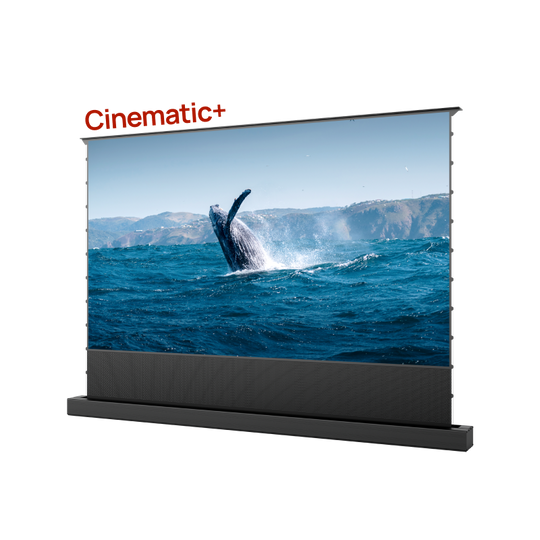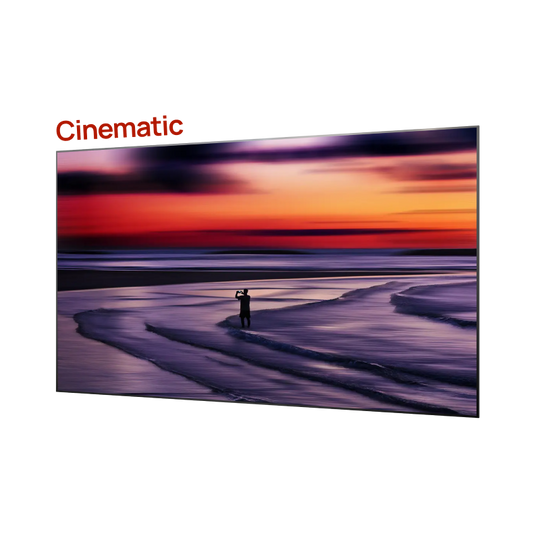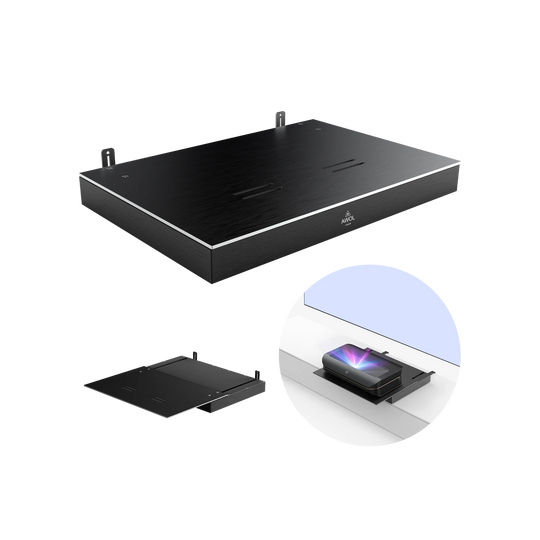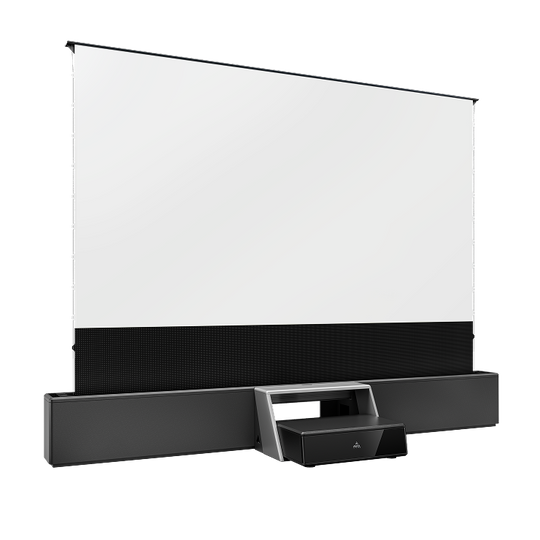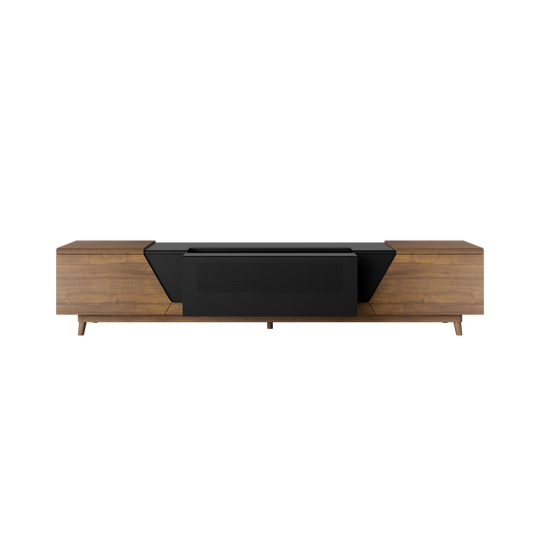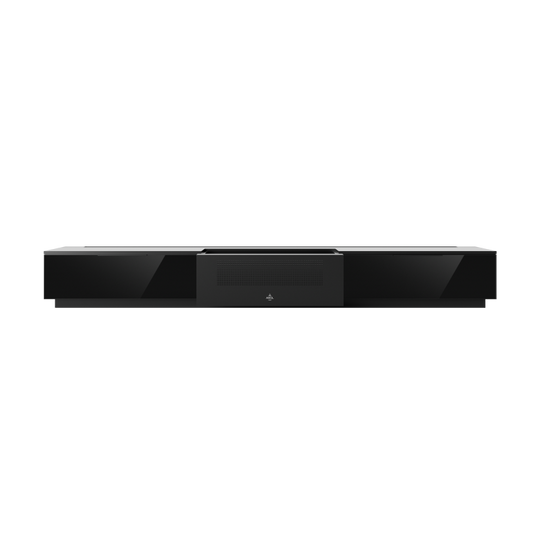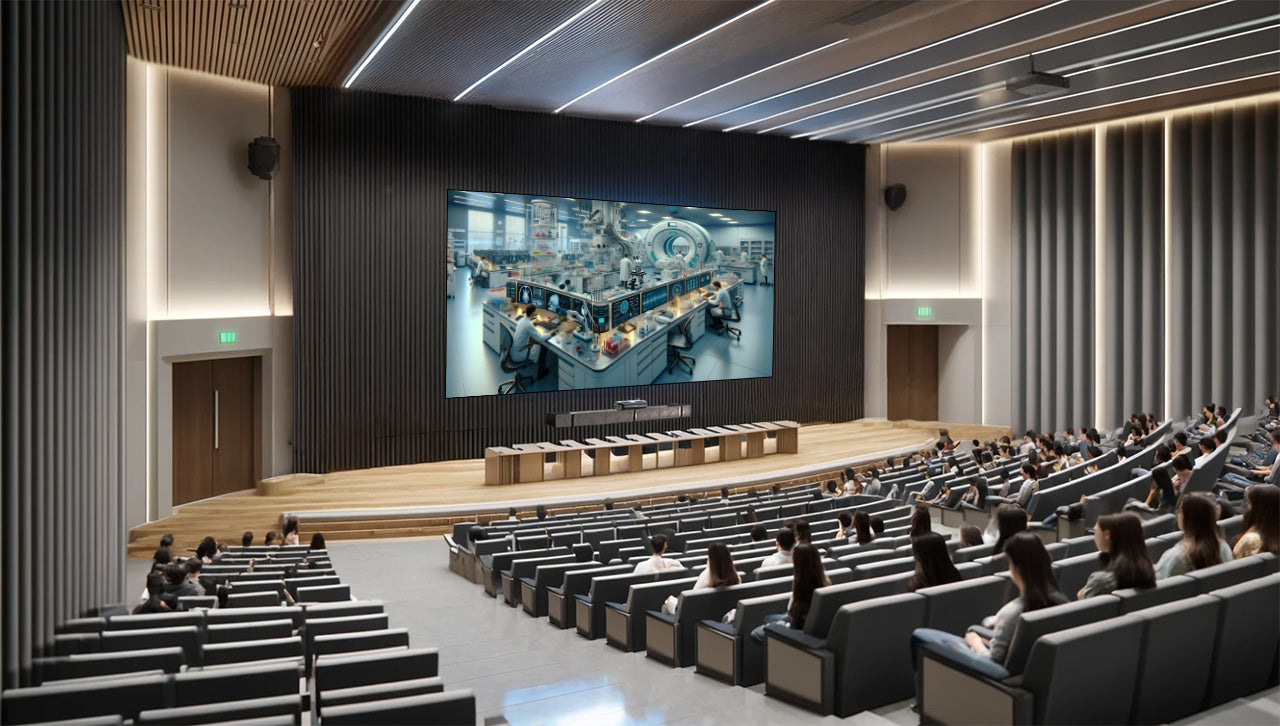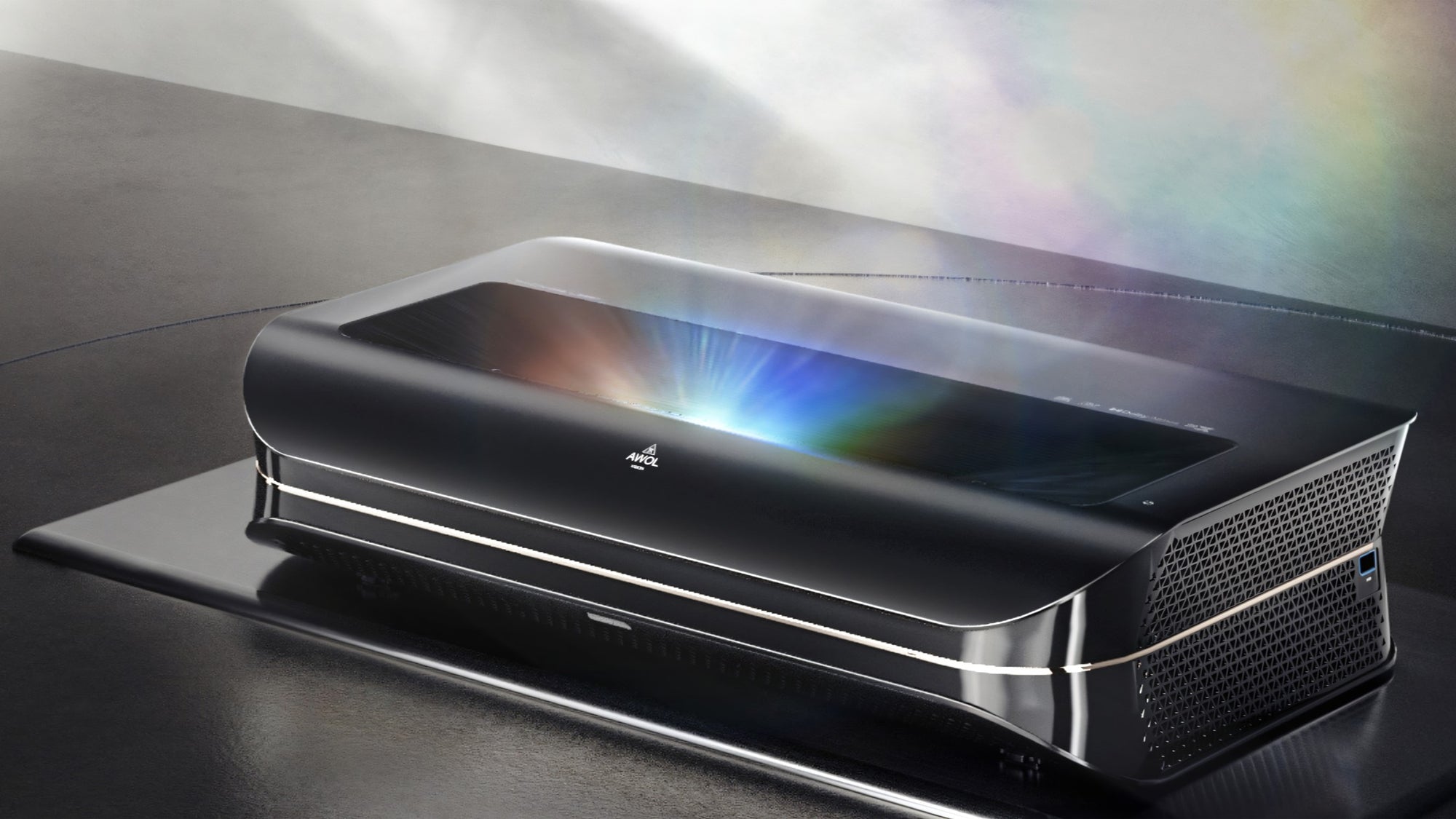The path to perfecting our personal home theater involves numerous crossroads and many parameters. Choosing the right UST LASER projector to suit our needs is the first step. Another crucial step is adjusting it to deliver a balanced image with accurate colors and the highest possible contrast.
Calibrating the white balance and gamma settings is perhaps the most important adjustment to ensure that our image is as neutral and true to the original as possible.
White Balance on Laser TV projector
White balance refers not only to white displayed by the projector, but also to all the intermediate shades between white and absolute black, known as grayscale. An incorrect white balance can lead to unnatural-looking images. If the white balance is too warm, for example, everything on the screen may have a yellow or red cast. Conversely, a white balance that is too cool can lead to a blue cast that impairs the overall viewing experience and distorts the result intended by the film director. The second scenario is the most common in Laser technology of the Laser TV devices.
White is made up of a mixture of the three primary colors green, red and blue. Essentially, the white we see is made up of 60% green, 30% red and only 10% blue. In digital display media such as a laser TV projector, each of the three primary colors is divided into 100 percentage steps or 256 digital steps. In this system, white is defined as 100% of red, green and blue. Calibration is important to adapt the RGB system to human vision and ensure that equal percentage settings of RGB values result in pure gray tones and white.
White balance is often measured in terms of color temperature, which is expressed in Kelvin (K). Lower color temperatures (around 2700K) produce a warm, yellowish light, while higher color temperatures (above 5000K) produce a cooler, bluish light. The standard white point for most displays is around 6500K, considered daylight white.
In addition to the standard white balance options such as cool, hot and standard, there is also the option to manually adjust each color individually in user mode. These settings are referred as RGB gain and offset. The gain control adjusts the percentage of a particular color across the entire gray scale, from absolute white to absolute black. The offset control, which is used sparingly, makes small corrections in the very dark gray tones close to absolute black.
The following images show how changing the gain of one of the three primary colors in the white balance affects the overall hue of the image.


It is important to adjust the gain of the three primary colors in the white balance so that the final result is as close to 6500K as possible, i.e. as neutral as possible. By projecting an image with a lot of white or some shades of gray, we can easily determine if the image tends towards a certain hue.
For a perfect calibration, a special measuring device such as a color meter and special software such as Calman or Chroma Pure are required. But believe it or not, the human eye is very sensitive to even slight variations in white balance color tone. If you take some time to project and carefully examine images like the ones below, you can easily achieve a neutral image that feels natural to your eyes by adjusting the white balance gain for each of the three colors.
reddish tint image

blue-green tint

balanced image

Gamma
A gamma curve is a mathematical function that describes the input-to-output ratio of a display. The most common gamma setting is 2.2, the standard for most sRGB displays. This means that the pixel value of 50% gray (128 on an 8-bit scale) is not displayed as 50% of the screen's maximum brightness, but is adjusted according to the gamma curve.
Gamma calibration refers to the adjustment of the screen's luminance in relation to the input signal and essentially controls the brightness of midtones without affecting shadows and highlights. The dark shadows and the highlights are controlled from the two “secondary gamma settings” on the menu, the brightness and contrast settings. The gamma setting is critical to ensuring that images are displayed with the correct contrast and detail.
Incorrect gamma settings can result in images that are either too dark or too bright. If the gamma value is too high, dark areas may appear darker and details may be lost. If the gamma value is too low, the image may appear washed out and lacking in contrast. This is detrimental in scenarios where visual fidelity is important, e.g. video editing, gaming or digital artwork.
In the following pictures you can see the difference on different gamma settings.
dark gamma

bright gamma

The relationship between white balance and gamma
These two parameters are linked. Proper calibration of both parameters ensures that the image on your projector is as accurate and visually appealing as possible and reflects the original intent of the creator.
In general, white balance has to do with the hue of the white and the overall grayscale, and gamma has to do with the brightness level of the individual shades of the overall grayscale.
But what if we symmetrically reduce or increase the green, red and blue gain on the white balance menu? The hue of the grayscale remains the same, but the brightness is affected because the amount of the three colors that are part of white changes. So, the gamma value is affected, right? Yes, it is. And basically, this is the second and most detailed method of fine-tuning our gamma after the basic setting in the gamma menu.
For example, if we decrease or increase the gain of green, red and blue by the same amount, the overall gamma value of our image will be decreased or increased.
Brightness and contrast settings
As mentioned above, these settings are part of the overall gamma setting. Brightness controls the brightness of the dark areas of the image and Contrast controls the bright ones.
Calibrating these settings is important so that we don’t lose detail in dark and light scenes of a movie (known as “burnt" blacks and whites). In the images below you can see how the brightness affect the final image by burn or overexpose the dark details.
This is how much detalls we must see on this image

This is the "burned" blacks effect by reducing the brightness

This is an overexposed image, we see dark details that we shouldn't actually see

The contrast setting has the same effect, but on the bright elements of the image. If you increase the contrast, you lose details in the bright parts of the image, this is called "burnt whites".
a balanced image - you can see the details on the bright spots

If you increase the contrast too much, the bright details in the image are lost

Brightness and contrast are most of the case well set by the factory calibration and only rarely a small correction of 1-2 units maximum need to be made.
Now that you understand the basic concepts behind white balance and gamma, you can easily take some time to adjust white balance & gamma on your laser TV projector. This will allow you to enjoy a neutral image that closely matches what the director of your favorite series or movie intended for you to see.
AWOL Vision

